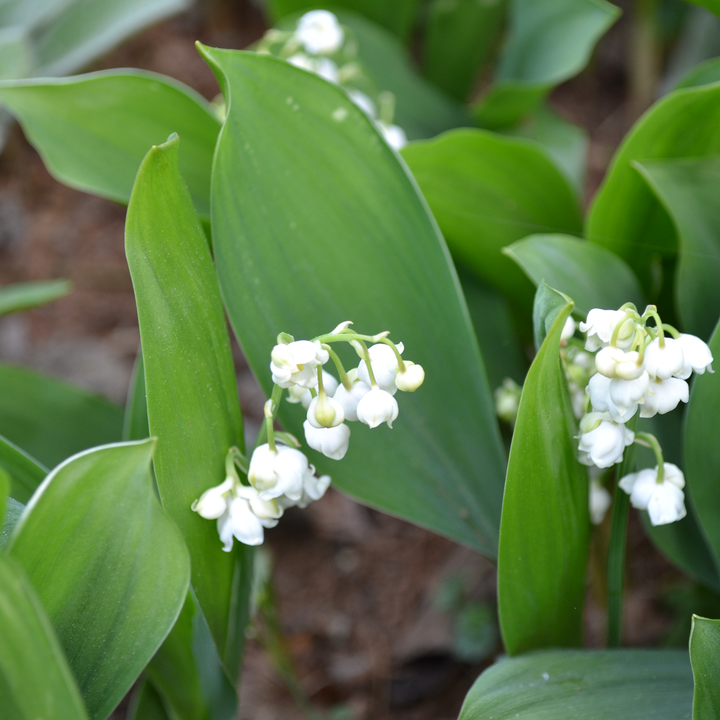Hardy, herbaceous, late-spring flowering perennial
Description: Fragrant, nodding, white, bell-like flowers and large, dark green, lance-like foliage
Habit: Grows 6 to 10 inches high and 1 to 3 inches wide; spreading
Culture: Prefers light shade and well-drained soil with a yearly application of well-rotted manure or compost in the fall
Hardiness: Cold hardy to USDA Zone 3
Origin: Europe
Attributes: Deer resistant
Jefferson documented
This well-known flower, native to Europe, is a universal favorite and has been in gardens since the 16th century. Williamsburg's John Custis first mentioned it around 1738 and, by 1829, flowers in white, double white, and rose red were known. Thomas Jefferson recorded lily-of-the-valley as early as 1771 in a list of hardy perennial flowers suitable for Monticello. In the late 19th century it became an important florist flower and was produced in immense quantities. Plant the growing tip of the rhizome just below soil level in a well-prepared bed. The foliage is not enjoyed by deer, and begins to go dormant by early fall, dying completely to the ground.
This plant will ship bare root.
Bare root planting tips:
~ If you can't plant immediately, store your plant in a cool location and keep the roots moist or pot in a container with a nursery potting mix from your local garden center.
~ Before planting, let the roots soak for several hours as you prepare the site. You'll want to dig a large enough hole so the root mass can spread out and the plant is at the same soil level as when it was growing in the nursery.
~ Once planted, water it in well and wait a month before fertilizing. Mulching will help to maintain moisture and raise soil temperatures for faster growth.
Details
| Genus | Convallaria |
|---|---|
| Species | majalis |












